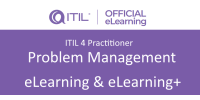Is ITIL® 4 just about IT? This is something I’ve been hearing more often since working as a consultant with C-level executives in companies.
With the pace of change in consumption of digital services – both used by businesses and consumers – there’s a risk that ITIL is perceived as something that just happens magically in the IT department to enable this.
But there’s much more to ITIL than IT – and there always has been.
Looking back briefly to ITIL v3, this focused on continuous service improvement and offered robust, mature and time-tested processes for all organizations providing services and in any technical environment. And I think it was always relevant to the whole organization – not just IT.
Today, ITIL 4 – cleverly designed for the digital era that’s powering the Fourth Industrial Revolution – is clearer about the way it merges its management practices with other approaches to achieve the best results across entire enterprises.
ITIL 4 for the whole business
The four dimensions of service management in ITIL 4 – namely organizations and people, information and technology, partners and suppliers and value streams – provide both governance and value that a business can provide to its customers while disrupting the competition.
This means that ITIL has relevance across an entire business. And, if senior level decision makers gain a better awareness of this by certifying in a module such as ITIL 4 Digital and IT Strategy, they’ll be much better positioned to plan or react to external changes and pressures.
For example, investment in remote working technologies during the Covid-19 pandemic have become paramount to ensure the success of a business while its employees are dispersed.
This is where IT and digital strategies are vital to support the overall business strategy; ITIL 4 does this by bringing together IT and digital capabilities so that organizations can use technology to deliver the essential component of successful businesses: value. This is enshrined in the framework’s guiding principle of focus on value, which is what stakeholders are expecting from their service providers.
Understanding the IT and digital relationship
There are certain questions that organizations need to ask which don’t begin and end with the IT department. I would expect people in the C-suite to want to know:
- How do our customers/users interact with our business?
- Is there a digital element?
- Is IT the entry point for this?
- Are we a digital business?
Unless your business is in the minority of enterprises and not reliant on technology, for example, a corner shop, it should have a digital dimension. This is about understanding how IT and digital services enable or – in their absence – suppress growth for your business. For this reason, ITIL 4 does not start and finish with IT; it encompasses how value is co-created between the business and its customers.
The governance, standards and practices available within ITIL 4 are there to keep organizations moving in the right direction and at pace. Or, if your intention is to be more disruptive and innovative, this is addressed in specific modules such as Digital and IT Strategy and High-velocity IT.
For those of you considering your ITIL 4 certification, I’d suggest you go for it. ITIL certifications increase your potential for growth and complement your ability to be both a specialist in one area of the business and to get involved in value-added activities across multiple business areas – not just IT!
Source: Axelos by David Barrow – ITSM consultant and ITIL 4 Managing Professional







